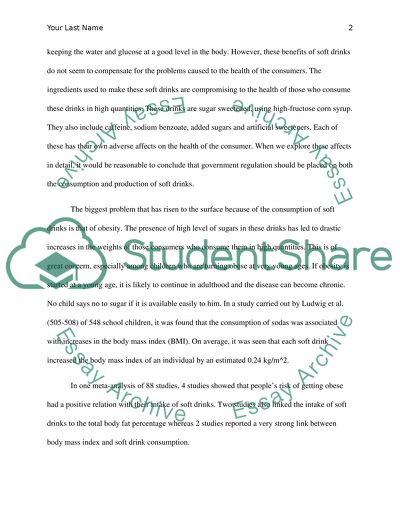Cite this document
(The Pros and Cons of Consuming Soft Drinks Research Paper Example | Topics and Well Written Essays - 1250 words, n.d.)
The Pros and Cons of Consuming Soft Drinks Research Paper Example | Topics and Well Written Essays - 1250 words. https://studentshare.org/health-sciences-medicine/1462037-the-pros-and-cons-of-consuming-soft-drinks
The Pros and Cons of Consuming Soft Drinks Research Paper Example | Topics and Well Written Essays - 1250 words. https://studentshare.org/health-sciences-medicine/1462037-the-pros-and-cons-of-consuming-soft-drinks
(The Pros and Cons of Consuming Soft Drinks Research Paper Example | Topics and Well Written Essays - 1250 Words)
The Pros and Cons of Consuming Soft Drinks Research Paper Example | Topics and Well Written Essays - 1250 Words. https://studentshare.org/health-sciences-medicine/1462037-the-pros-and-cons-of-consuming-soft-drinks.
The Pros and Cons of Consuming Soft Drinks Research Paper Example | Topics and Well Written Essays - 1250 Words. https://studentshare.org/health-sciences-medicine/1462037-the-pros-and-cons-of-consuming-soft-drinks.
“The Pros and Cons of Consuming Soft Drinks Research Paper Example | Topics and Well Written Essays - 1250 Words”. https://studentshare.org/health-sciences-medicine/1462037-the-pros-and-cons-of-consuming-soft-drinks.


